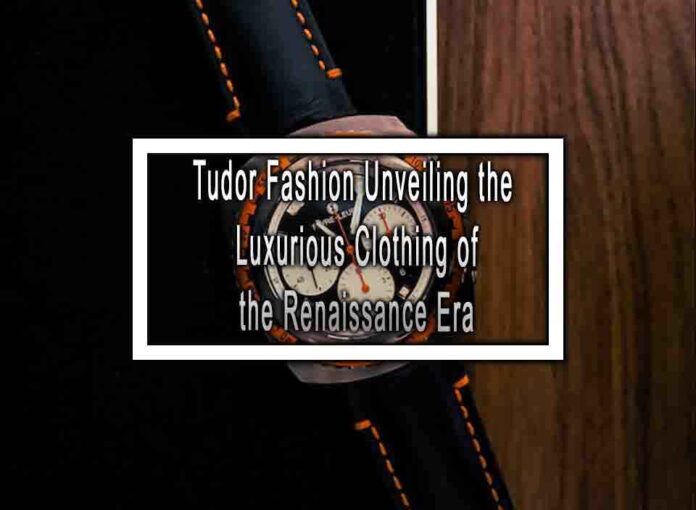Tudor fashion refers to the clothing and style trends of the Renaissance era in England, which encompassed the reigns of the Tudor monarchs, including Henry VII, Henry VIII, Edward VI, Mary I, and Elizabeth I, from the late 15th century to the early 17th century. Tudor fashion was characterized by its opulence, elaborate details, and distinctive silhouettes. Here’s an unveiling of the luxurious clothing of the Tudor Renaissance era:
For Men:
- Doublets: Men wore doublets, which were tight-fitting, padded jackets with a waist-length or slightly longer hem. These were often decorated with embroidery, jewels, and elaborate fabrics.

- Hose: Hose were a type of legwear made of silk, wool, or other fine materials. They were often colorful and could be slashed to reveal the fabric underneath.
- Codpieces: Codpieces were prominent in Tudor fashion. These padded and often ornamented fabric pouches covered the area between the legs, serving both a functional and decorative purpose.
- Cloaks and Capes: Men would wear cloaks and capes made of rich fabrics like velvet and silk. These garments were often adorned with fur trims and brocade.
- Ruffs: Ruffs, stiff collars made of lace or linen, were a prominent feature of Tudor fashion. They became increasingly elaborate and intricate over time.
- Jewelry: Men wore jewelry such as rings, brooches, and chains, often adorned with precious gems and pearls.
- Hats: Tudor men sported various types of hats, including berets, flat caps, and tall, feathered hats known as “bonnets.”
For Women:
- Gowns: Tudor women’s gowns were characterized by their full skirts, fitted bodices, and high, square necklines. These gowns were made of luxurious fabrics like silk, satin, and velvet.
- Farthingales: Farthingales were hoop skirts worn underneath gowns to create a cone-shaped silhouette. They could be quite large, emphasizing the fashionable “Spanish farthingale” style.
- French Hoods: French hoods were headdresses worn by Tudor women. They consisted of a wired frame with a veil or cap attached, often adorned with jewels and pearls.
- Corsets: Women wore corsets to achieve a slender waistline. These corsets were stiffened with whalebone or wood and laced tightly.
- Petticoats: Petticoats were layered underneath gowns to add volume to the skirt and provide warmth.
- Gloves: Women wore gloves made of fine leather or silk, often embroidered or decorated with jewels.
- Jewelry: Like men, Tudor women adorned themselves with jewelry, including rings, necklaces, bracelets, and earrings.
- Embroidery and Embellishments: Tudor clothing was often adorned with intricate embroidery, beading, and embellishments, showcasing the wearer’s wealth and status.
Tudor fashion was opulent and highly influenced by the social hierarchy of the time. The clothing of the Tudor era reflected the wearer’s status, and sumptuary laws were enacted to regulate who could wear certain fabrics and designs. It was a period of extravagance and luxury, with clothing playing a significant role in defining one’s place in society.











